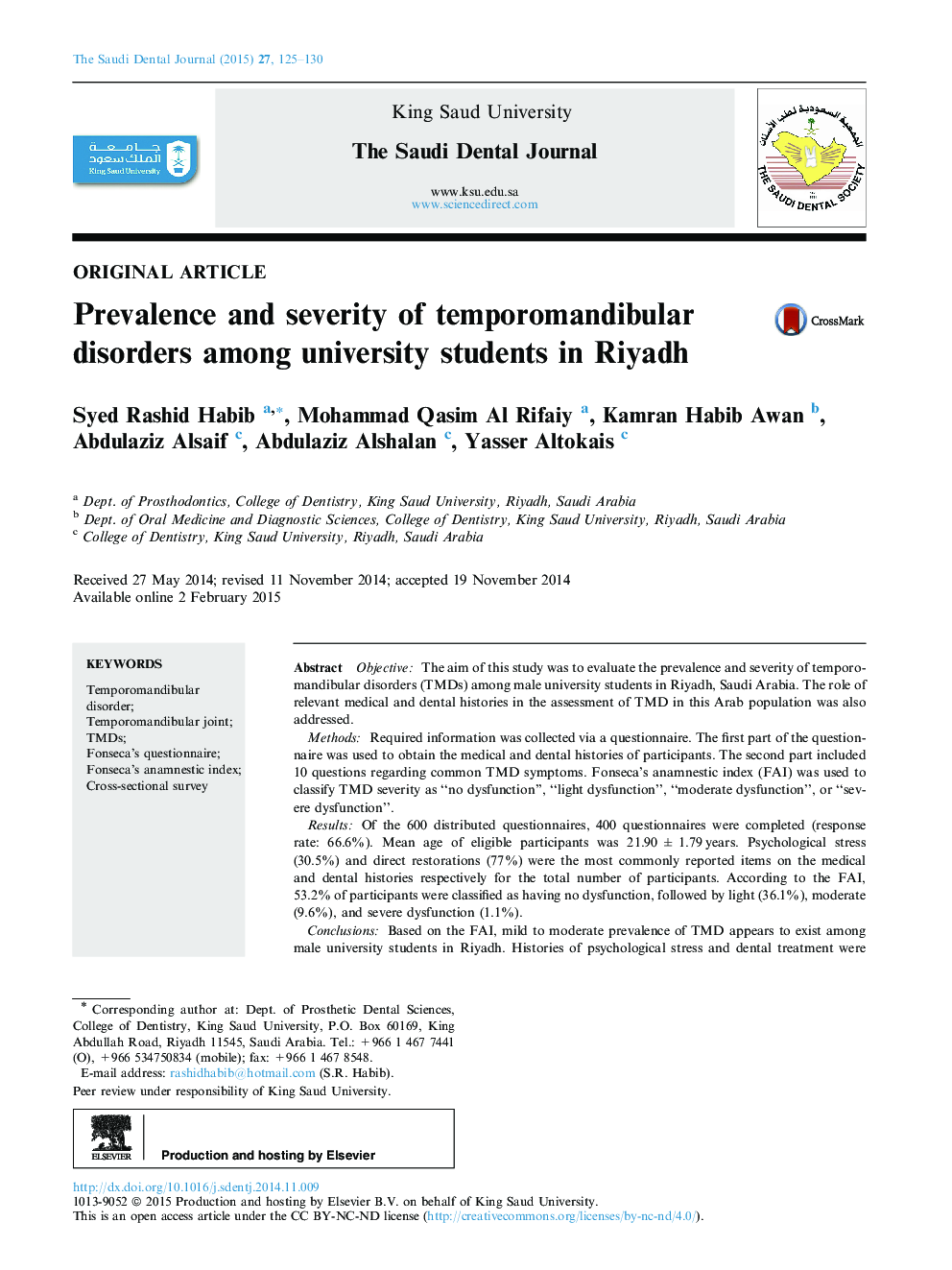| Article ID | Journal | Published Year | Pages | File Type |
|---|---|---|---|---|
| 2688721 | The Saudi Dental Journal | 2015 | 6 Pages |
ObjectiveThe aim of this study was to evaluate the prevalence and severity of temporomandibular disorders (TMDs) among male university students in Riyadh, Saudi Arabia. The role of relevant medical and dental histories in the assessment of TMD in this Arab population was also addressed.MethodsRequired information was collected via a questionnaire. The first part of the questionnaire was used to obtain the medical and dental histories of participants. The second part included 10 questions regarding common TMD symptoms. Fonseca’s anamnestic index (FAI) was used to classify TMD severity as “no dysfunction”, “light dysfunction”, “moderate dysfunction”, or “severe dysfunction”.ResultsOf the 600 distributed questionnaires, 400 questionnaires were completed (response rate: 66.6%). Mean age of eligible participants was 21.90 ± 1.79 years. Psychological stress (30.5%) and direct restorations (77%) were the most commonly reported items on the medical and dental histories respectively for the total number of participants. According to the FAI, 53.2% of participants were classified as having no dysfunction, followed by light (36.1%), moderate (9.6%), and severe dysfunction (1.1%).ConclusionsBased on the FAI, mild to moderate prevalence of TMD appears to exist among male university students in Riyadh. Histories of psychological stress and dental treatment were evident among these students. Information obtained from the FAI may be helpful in assessing the prevalence of TMD and has important implications for the early diagnosis of TMD and the prevention of future TMD-related complications.
